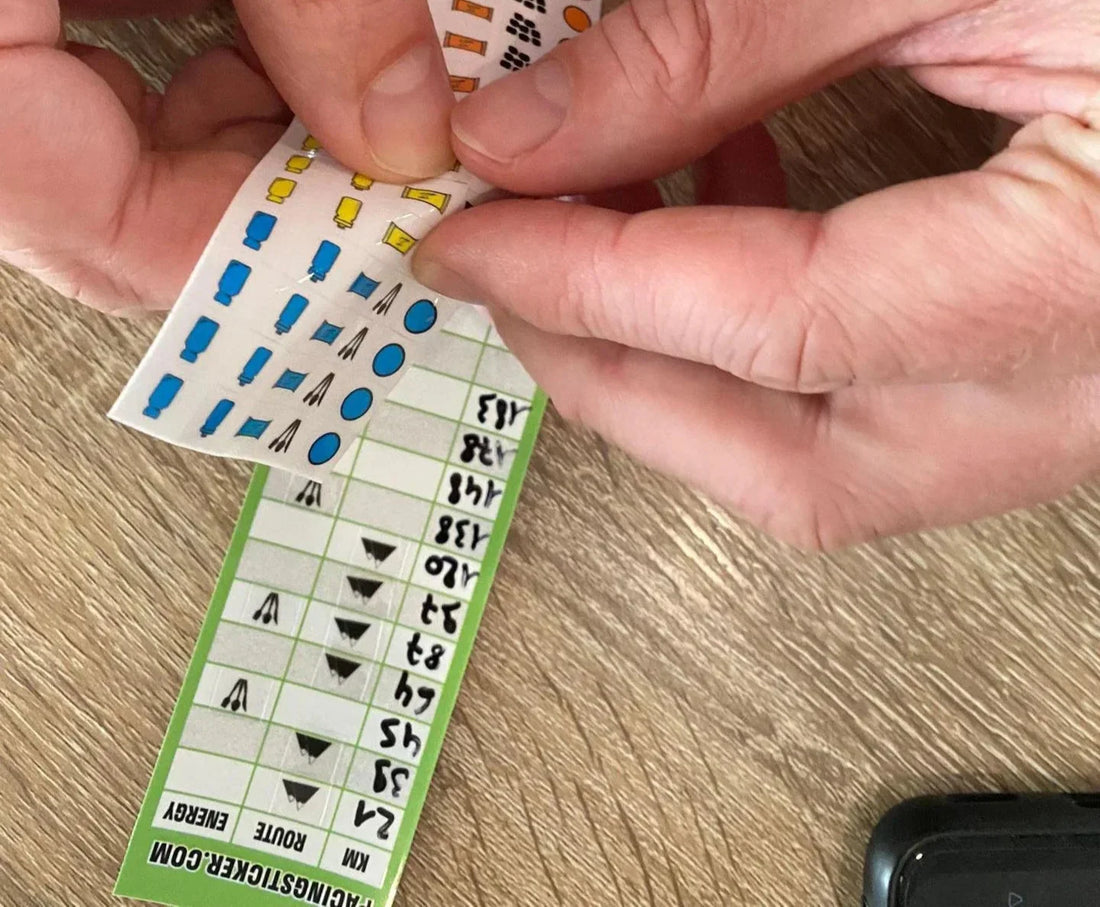The Ultimate Nutrition Plan for Your Next Cycling Event — and How to Stick to It
When it comes to cycling performance, having a nutrition plan is just as important as your training sessions. You can have the perfect legs, the right bike, and the best pacing strategy, but if your fuelling is off, your performance will suffer.
In this article, we’ll walk you through creating a winning cycling nutrition plan — and show you how the Pacing Sticker helps you stick to it on race day.
Why a Nutrition Plan Matters in Cycling
Long-distance cycling events such as gran fondos, sportives, and triathlons push your body to its limits. Your muscles burn through glycogen quickly, and without a steady supply of carbohydrates, hydration, and electrolytes, you risk hitting the dreaded bonk.
A good nutrition plan ensures:
-
Consistent energy levels
-
Improved recovery
-
Avoidance of cramps and dehydration
-
Mental sharpness in the final kilometres
How to Build Your Cycling Nutrition Plan
-
Know Your Requirements
Most cyclists need 60–90g of carbohydrates per hour in long events. That’s usually a mix of energy gels, bars, bananas, or sports drinks. -
Plan Around the Course
Study the route: climbs, feed zones, and technical sections all affect when and what you can eat. -
Test in Training
Never try new products on race day. Practise eating and drinking at race intensity. -
Balance Hydration and Electrolytes
Dehydration can start before you feel thirsty. Sip fluids regularly and include electrolytes, especially in warm conditions.
The Race-Day Challenge: Sticking to Your Plan
Even with the best nutrition plan, it’s easy to forget to eat or drink when adrenaline kicks in. This is where the Pacing Sticker comes in.
Our customisable pacing stickers allow you to mark exactly when you should fuel — using icons for bottles, gels, and bars, right on your top tube. You’ll see your nutrition reminders in real time without breaking concentration.
No more missed feedings, no more energy crashes. Just a smooth execution of the nutrition plan you trained for.
Example: How a Pacing Sticker Works with Your Nutrition Plan
Let’s say you’re riding a 120 km sportive:
-
At 30 km: Gel
-
At 50 km: Bottle refill
-
At 65 km: Energy bar before the big climb
-
At 90 km: Electrolyte drink
-
At 110 km: Final gel for the sprint
Instead of relying on memory, all these moments are on your Pacing Sticker, matched to the course profile.
Final Thoughts
A nutrition plan turns good rides into great performances. The Pacing Sticker is your silent coach, making sure you stay fuelled, hydrated, and ready to finish strong.
Ready to take your nutrition plan from paper to the road?


